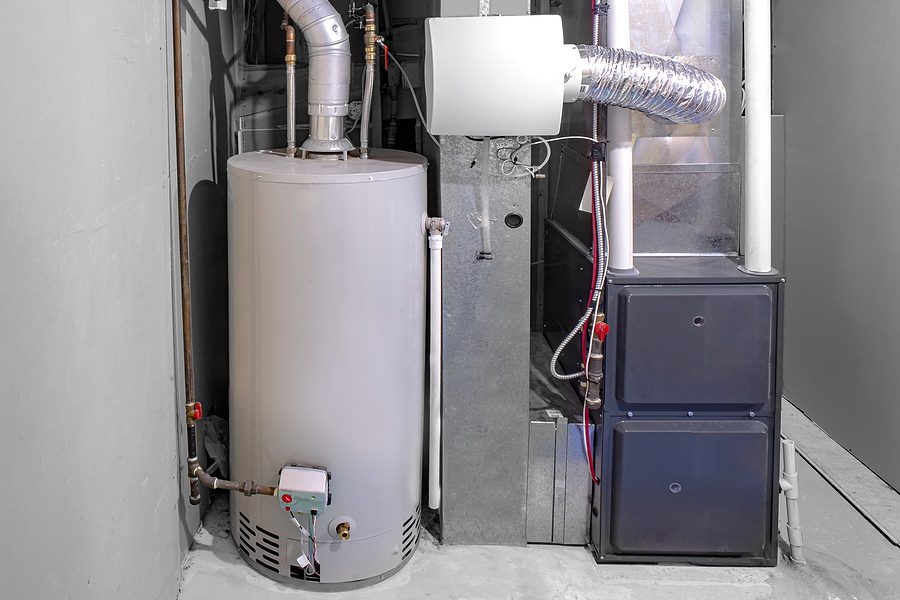
Since the winter cold sets in each year, your trusty home furnace kicks into high gear to keep you cozy and warm indoors. But if your old furnace has seen better days, it may be time to shop for a replacement.
When choosing a new furnace for your home, you have five main options to consider. Read on to learn the basics about each furnace type, along with the key pros and cons of each system to help you decide which is best for your space.
Natural Gas
Natural gas furnaces rank as the most popular type of home heating system. However, you’ll need access to a municipal gas line to use this option in your residence. If improperly maintained, gas furnaces do carry a risk of CO2 poisoning. So if you choose this system, be vigilant about yearly professional tune-ups.
Despite higher upfront equipment and installation costs, natural gas furnaces offer very affordable long-term operation. Expect to invest $1,700 – $9,700 to purchase and install a new natural gas furnace. These systems work similarly to electric furnaces to heat your living spaces:
- A gas flame heats an internal heat exchanger
- The heat exchanger then transfers warmth into incoming cold air
- Finally, the furnace circulates the heated air through ductwork and into your rooms
Electric Furnace
Thanks to their plug-and-play design, electric furnaces rank among the easiest heating systems to install. They also cost less upfront than most other furnace types, averaging $1,600 – $6,200. However, operating costs tend to run higher for electric furnaces over time. These systems heat your home as follows:
- The furnace pulls cold air from surrounding rooms into the system
- Electric heating elements then warm the air as it passes through
- Finally, the electric blower pushes the heated air back out through ducts and into living spaces
Propane Furnace
Propane furnaces work similarly to natural gas systems. But instead of tapping into municipal natural gas lines, they utilize on-site propane fuel tanks. Upfront costs fall somewhere between natural gas and electric units, averaging $1,800 – $6,000. In terms of efficiency, propane tends to edge out fuel oil but lags behind natural gas. Here is how they work:
- Liquid propane converts to a gas form inside the furnace
- This propane gas flows across a heat exchanger, warming it
- The heat exchanger passes warmth into incoming cold air
- Finally, the propane furnace pushes out heated air through ductwork
Oil Furnace
Oil-fired heating systems stand as a popular natural gas and electric furnace alternative. Their main downside lies in volatile fossil fuel prices that can lead to unpredictable heating bills. Expect to spend $2,500 – $6,000 to purchase and install a new oil furnace. You’ll also need room for an outdoor oil tank, which you’ll have to keep filled for uninterrupted winter warmth.
Inside an oil furnace, fuel transforms to heat using this process:
- An oil pump mists fuel inside the burner chamber
- This fine mist sprays onto the burner surface
- The resulting small oil fire heats a chamber of incoming cold air
- Finally, the warm air circulates through ducts and into living spaces
Wood Furnace
Dual-fuel wood furnaces allow you to burn wood or alternative fuels like oil or propane. This allows you to take advantage of affordable wood heat while keeping backup fossil fuel systems for convenience.
Expect to spend $2,600 – $12,500 to purchase and install a new wood burning furnace. Though affordable to operate, these systems rank as the least energy efficient designs. And you’ll need space to store wood fuel. If a wood furnace suits your heating needs, models with built-in blowers simplify distributing warmth throughout your home.
The Best Furnace Option Depends on Your Home
When it’s time to replace your aging home furnace, weigh the pros and cons of each system type carefully. Factor in upfront installation costs, long-term operating expenses, maintenance needs, and convenience. If you need help deciding which option is right for your space, consult with qualified HVAC installation pros in your area.
Hope this helps!


